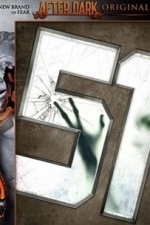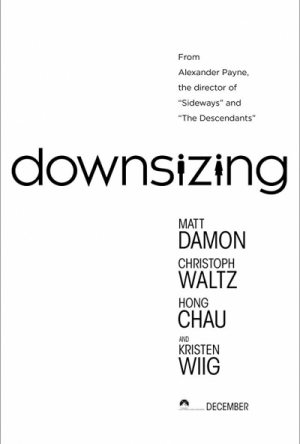
Stick Texting Emoji Emoticons Killer
Utilities and Entertainment
App
Whatsapp, Twitter, Facebook, Instagram? Now convert animations to movie files for use almost...

Paytm - Payments & Wallet
Shopping and Lifestyle
App
#PaytmKaro for the fastest recharge, bill payment & shopping experience. Quick, easy and secure,...
BankofMarquis (1832 KP) rated Extraction (2020) in Movies
May 6, 2020
I'm happy to report that in the case of EXTRACTION, that is not the case. This is a good (if by the books) popcorn action flick with a charismatic lead keeping you company throughout.
In EXTRACTION, Chris Hemsworth stars as an Australian Mercenary (who knew there was such a thing), hired to extract the kidnapped son of a drug lord from the hands of his fiercest rival.
This is a pretty "by-the-numbers" action film:
1). The mercenary has "baggage" - will the events (and the subject he is to extract) help him come to terms with his pent-up emotions in order to move past his traumatic "baggage"?
2). Will there be some sort of "double-cross" that screws up the extraction causing our hero to go "on the run" with his "Extraction"?
3). Will there be a buddy that our hero trusts who will, ultimately, double-cross him?
What do you think?
The fun of this film was not the plot machinations (they are pretty basic), but the execution of these machinations - and this execution is pretty fun/enjoyable.
Start with Chris Hemsworth as our mercenary - with the great action flick name of Tyler Rake. Hemsworth knows exactly what kind of film he is in - and he brings the goods. If he chose to, I think Hemsworth could be an action hero staple like Jason Statham or Dwayne "The Rock" Johnson - but I think Hemsworth is not really interested in that. But here, he is steely eyed and calm taking hits and doling out punishment to hoards of "red shirt" bad guys in his way. He has the action hero chops. He also has the acting chops to make the overwrought "emotional" scenes palatable. He makes weak writing enjoyable.
Joining him is Rudhraksh Jaiswal as "the extraction" - and his interactions with Hemsworth are fun. Randeep Hodha and Golshifteh Farahani do a nice job in the roles that they play in the action and the always watchable David Harbour eats a ton of scenery in his limited time on the screen. All are fun to watch.
But it is the telling of the story by first time Director Sam Hargrave that was a (pleasant) surprise for me. After doubling Chris Evans in the first CAPTAIN AMERICA film, Hargrave became the "go to" guy for Marvel action choreography, so (I'm sure) he got to know Hemsworth there. He brings a fast-paced style to this film that works. He doesn't stop to examine much at all (which helps the plot holes in the script) and his action work with his stunt actors is top-notch. If you watch nothing else in this film, check out the chase scene at about the 1/3 mark of the film. Hemsworth and "the extraction" are being chased - and it is filmed in the "shaky cam/cinema veritae/ make it look like one long tracking shot" style that I often criticize in my reviews - but here it worked and worked well. I'll be keeping my eye on what Hargrave does next (word is it that there will be an Extraction 2).
All of this is brought together by Producers Joe and Anthony Russo - the Directors of many Marvel films (including INFINITY WAR and ENDGAME). Not only did they Produce this film, but they wrote the story from where this film came from. It's obvious that they turned the majority of the screenplay writing to others (most notably Ande Parks) and this film is based on a graphic novel...so it plays like an over-the-top comic book action flick (think John Wick-lite) where the dialogue is sparse and cliche-ridden. This part of the film was far less interesting than the action parts.
But, the action is fast, fun and furious and Hemsworth is worth watching for the 1 hour 56 minute running time.
All-in-all, a good time was had while watching the first "new" film in over 6 weeks.
Letter Grade: B+
7 1/2 stars (out of 10) and you can take that to the Bank(ofMarquis)
With the tour happening around the base we see how the aliens held there start their own escape. The tour group must work together to survive while the soldiers on the outside also have to deal with the aliens coming up the levels.
51 is a horror sci-fi film set inside Area 51, we actually get to see the idea that aliens have been trapped there for decades and most importantly we get to see different types of aliens. This helps play into the conspiracy side to the story very well. When it comes to the survival side of the story there isn’t too much fresh happening here but it does make you wonder what abilities each of these aliens actually has while the film unfolds.
Actor Review
Vanessa Branch: Claire is an internet reporter with a reputation of pushing the limits to make sure she breaks the story, she isn’t one of the Colonel’s first choices to be part of the tour but while she is here she will look to break the big story. Vanessa is a solid strong leading lady for this horror film.
Bruce Boxleitner: Col Martin is the man who has to lead the tour group around Area 51, he doesn’t like the idea and will try to make this the simplest tour possible giving away only small amounts of details. Bruce comes off like a normal colonel you would expect to see in thi style of film.
Rachel Miner: Sgt Hanna is on the outside guarding the base she leads the men while having her own troubled past and reputation to live up to. Rachel is solid in this role which feels like a completely different story to the main tour.
Jason London: Aaron ‘Shoes’ Schumacher is a rookie soldier that is under the wing of Sgt Hanna, he wants to see combat but has to deal with not having this chance for now. Jason is solid in this role where we do get a few extra laugh from this film.
Support Cast: 51 has a supporting cast which includes different of soldiers as well as the fellow reporters, each one comes off slightly disposable through the story.
Director Review: Jason Connery – Jason gives us a horror that has fresh twists while being the standard survival thriller.
Horror: 51 is filled with blood soaked kills throughout the survival horror side of the story.
Sci-Fi: 51 takes us to Area 51 with aliens trying to escape their prisons which heaps all of the sci-fi side of the story involved.
Settings: 51 is set at Area 51 for the whole film which plays into the conspiracy side of the story.
Special Effects: 51 has low budget effects which work once we see the aliens made with practical effects.
Suggestion: 51 is one I feel the horror fans out there can watch late night on TV and get the enjoyment out of it. (Late Night TV)
Best Part: Different types of aliens involved.
Worst Part: Hanna and Shoes storyline seems out of place and almost talking to audience early on.
Believability: No
Chances of Tears: No
Chances of Sequel: No
Post Credits Scene: No
Oscar Chances: No
Budget: $1 Million
Runtime: 1 Hour 30 Minutes
Tagline: The military’s best-kept secret just broke loose.
Overall: Simple but enjoyable sci-fi horror film.
https://moviesreview101.com/2016/11/04/movie-reviews-101-midnight-horror-51-2011/
Darren (1599 KP) rated Ford v Ferrari (aka Le Mans '66) (2019) in Movies
Nov 7, 2019
Performances – Christian Bale and Matt Damon are both fantastic proving to everyone why they are considered two of the best in the business today, they have great individual moments as well as banter between them. Outside of the two big names, nobody does get to reach their level and everybody is a joy to watch in their roles.
Story – The story here follows Henry Ford II desire to beat Enzo Ferrari in the Le Mans 24-hour race, we see him hire a former winner turned designer to build his car, as the two sides do battle to get Ken Miles behind the wheel, in an attempt to make history. This does show how an American decided he would rather push the limits of his bank than improve the product he was making as we see how Ford changed the racing world that Ferrari had been dominating for decades and how faith in a driver is often more important that having the fastest car. The story is told over a couple of years, we get to see the important turns in the battle between Carroll and Ford’s executives to get the best driver behind the wheel, before letting us just sit back and enjoy the races. It could have had a little bit of the story chopped down to save some time though.
Action/Biopic/Sport – The action mixes with the sport wonderfully to give us edge of the seat race moments that will be the highlight of the film, while the biopic side of the film seems to focus more on the car side of things only, while Ken does have a family, we really don’t learn anything else about Carroll outside of his work.
Settings – The film recreates the iconic race track perfectly and shows us how the time relevant cars were used in nearly every scene of the film, on and off the track.
Scene of the Movie – Le Mans Race.
That Moment That Annoyed Me – Give us subtitles for the Ferrari scenes.
Final Thoughts – This is a high speed biopic that doesn’t let you breath through most of the action involved, it has brilliant performances from the whole cast and is a must watch for any motor sports fans.
Overall: Motor Sports Fans Must Watch.
Gareth von Kallenbach (980 KP) rated Downsizing (2017) in Movies
Jul 11, 2019
This Alexander Payne (The Descendants, Nebraska, Sideways) written (co-written by Jim Taylor) and directed film is interesting and fun. If you look at this movie as a satire and don’t get too caught up in is this actually plausible you will be fine. For instance they make mention to how the people who are shrunk are pretty much left alone by things like mosquitoes and other insects but never mention things like rodents or other predators that would be difficult to fend off. I also was surprised by how in depth they get into social issues as the trailer I saw made it look more comedic than the film turned out to be. Not saying that there are not funny moments but the emphasis was really on issues like global overpopulation, exploitation of the poor, etc. and how one man decides to tackle these issues as the present themselves. I was taken by surprise at first but by the end of the film it really put everything into perspective.
Hong Chau, as Ngoc Lan Tran in the film, stood out and was really funny at times. The rest of the cast was good and fit the story well. The story did tend to drift between comedy and drama and not always as smoothly as intended. The film comes in at 2 hours and 15 minutes which is a little long but really if it was shorter the story would be even more all over the place. The plausibility of most of the film was in question for me and that was definitely distracting. But looking back if I spent less time on that I would have enjoyed the film more. Visually nothing really stand out like I thought it would and there was potential. The novelty of everyday things being bigger did get over done a little.

StreamToMe
Photo & Video and Music
App
Use StreamToMe on your iPhone, iPod Touch or iPad to play *video*, *music* and *photo* files...

AikidoGuide
Sports and Education
App
THE AIKIDO GUIDE is a powerful tool that fully utilizes app technology to give a unique learning...
Heather Cranmer (2721 KP) rated Don't Stop Believin' in Books
May 28, 2019
Olivia Newton-John rose to fame in the United States as the character of Sandy in the movie Grease. She also had a bunch of hit songs and records afterwards. Olivia's autobiography does mention her rise to fame although I felt as if there wasn't enough time spent on her rise to fame. She does write about her time with Grease and other films as well as recording her songs throughout the book. I felt the movies and songs were written about well.
We get a taste of her life as a child in England and Australia, although I felt she didn't discuss her pre-fame life too much. I would have liked to read more about her childhood instead of just being rushed into when she started performing. I know Olivia Newton-John likes to keep her private life out of the limelight, but when writing an autobiography, it's important to give the reader a little more details than what Don't Stop Believin' gave us.
There was so much name dropping throughout this book! While I understand that famous people know other famous people, sometimes I felt as if Olivia was dropping names just for show instead of because it fit the story. You have a lot of famous friends. We get it!
Another thing that annoyed me about the book was how some parts seemed like an advertisement for her Olivia Newton-John Cancer Wellness and Research Centre as well as for her husband, John Easterling's, herb company. I know she's done so much for her cancer center, (which I give her mad props for), but she goes on and on about how great and lovely of a place it was especially after she was an inpatient there. Of course the staff would treat her better when her name is on the building! There's more than one chapter devoted to how great the place is. I'm sure it is lovely, but I felt like I didn't need to a chapter (and more) about how great it is. As for her husband's herb company, she went on and on towards the end of the book how his herbs really helped her out which is great, but again, does the reader really need the specifics and being told over and over again how helpful it was?
The major thing that annoyed me was how preachy Don't Stop Believin' was in a lot of chapters. In fact, it made me feel guilty sometimes that I rely on modern medicine. Olivia writes how she'd rather take the natural approach to fighting off viruses and diseases, and I get that because I don't like to take medicine needlessly either, but sometimes, it's the best thing. However, I just felt that Olivia was berating those who choose to go the medicinal route. I felt like she was implying that natural remedies work better than modern medicine. This can be dangerous especially if someone gets off their medicines they need to survive to try the natural approach. People should always discuss any changes of medication with their doctors.
To me, Don't Stop Believin' writes like someone who's always been privileged and sheltered throughout their life. A lot of it feels like Olivia Newton-John is out of touch with reality and like she's living in La-La Land. I just found it hard to relate to her throughout the book. Yes, she has gone through some hardships such as deaths in the family, her cancer diagnoses, and her ex-boyfriend disappearing, but for the most part, her autobiography is just too sunshine and rainbows for me to truly relate.
Don't Stop Believin' flows beautifully though, and the writing is done very well, so it has that going for it. I did find myself enjoying the book most of the time when Olivia wasn't been preachy or advertising something. There were some interesting tidbits about her life throughout the book.
Trigger warnings include some profanity use, death, cancer, drinking, and smoking.
Overall, Don't Stop Believin' isn't a bad book, quite the contrary. It's just a bit too hippie dippy for me to have truly enjoyed it to its fullest. I did find the book interesting though despite some flaws. I would recommend Don't Stop Believin' by Olivia Newton-John especially to those who have been diagnosed with cancer as this book does come with a bunch of positivity when it comes to dealing with cancer.

Piano Maestro by JoyTunes
Education and Music
App
Piano Maestro is a fun and engaging piano practice tool for families and teachers. Chosen by Apple...




